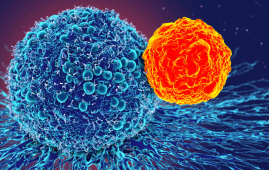

Undiagnosed chest pain and heart problems could be better assessed with the use of a novel imaging approach that examines cardiac micro-vessels. This technology has been tested on patients.
To create sub-millimeter resolution images of cardiac micro-vessels, researchers from the Department of Bioengineering and the Faculty of Medicine at Imperial College London collaborated with scholars from UCL. Four human patients underwent testing using the novel non-invasive imaging technology.
Large blood veins on the surface of the heart can be seen with current imaging methods. However, by imaging tiny micro-vessels within the heart muscle, this new technology may enable researchers to examine the physiology of the heart in more detail.
Physicians may find it easier to comprehend the role these vessels play in cardiovascular disorders such as microvascular coronary disease and cardiomyopathies, as well as in unexplained chest pain, thanks to research published in Nature Biomedical Engineering.
Visualizing cardiac vessels is crucial for managing cardiovascular diseases, but there is a lack of understanding of how the blood flows within the small vessels of the heart. Our study images these vessels non-invasively in the highest resolution yet which, following further research, could help clinicians to manage these diseases.”- Professor Mengxing Tang, from the Department of Bioengineering at Imperial College London, and the corresponding author of the research
Seeing tiny vessels
For the heart to circulate blood throughout the body and provide tissues with oxygen while expelling waste and carbon dioxide, it must have efficient blood flow. On the other hand, aberrant blood flow from damaged cardiac vessels may result in tissue damage and heart failure.Four patients with hypertrophic cardiomyopathy (HCM) were used by the scientists to test the imaging method, which captured high-resolution images of the patients’ hearts’ cardiac micro-vessels and flow dynamics using ultrasonography and microbubbles.
Imaging the micro-vessels was difficult because of their size and the heart’s rapid motions, particularly at resolutions of less than a millimeter.
The method used by the researcher may be useful in assessing various heart problems. For instance, the method might be used by medical professionals to see anatomical abnormalities in individuals with cardiomyopathies and microvascular coronary disease, which would facilitate diagnosis and treatment and lead to better patient outcomes.
Professor Tang said: “This is the first time we demonstrated it is possible to image these vessels in such resolution, which has never been done before in humans. This has opened up a wide range of opportunities to study heart physiology and observe different diseases and conditions non-invasively and safely.”
Co-author and cardiologist Professor Roxy Senior, from the National Heart and Lung Institute at Imperial College London, said, “For the first time this technique allows direct visualization of the very small heart muscle vessels which when diseased give rise to chest pain which can be not only debilitating but may also lead to death. Because at present these vessels can be assessed only by indirect means the condition can be misdiagnosed.”
Upcoming uses and additional study
Despite the initial success, the research is still in its early phases, and additional studies with a larger number of patients would be necessary to fully comprehend the technique’s therapeutic and research significance. Image quality may also be improved by more research.
Professor Tang stated: “We are optimistic about what our new technique could bring to cardiovascular patient healthcare.”
In collaboration with oncologists, cardiologists, radiologists, breast surgeons, and other physicians, Professor Tang is also investigating the possible applications of super-resolution ultrasound technology for the assessment of a variety of other disorders.
He said: “This far-reaching research would never happen without collaboration between interdisciplinary teams of engineering and clinical sciences researchers.”
For more information: Transthoracic ultrasound localization microscopy of myocardial vasculature in patients, Nature Biomedical Engineering, doi.org/10.1038/s41551-024-01206-6
more recommended stories
 T-bet and the Genetic Control of Memory B Cell Differentiation
T-bet and the Genetic Control of Memory B Cell DifferentiationIn a major advancement in immunology,.
 Ultra-Processed Foods May Harm Brain Health in Children
Ultra-Processed Foods May Harm Brain Health in ChildrenUltra-Processed Foods Linked to Cognitive and.
 Parkinson’s Disease Care Advances with Weekly Injectable
Parkinson’s Disease Care Advances with Weekly InjectableA new weekly injectable formulation of.
 Brain’s Biological Age Emerges as Key Health Risk Indicator
Brain’s Biological Age Emerges as Key Health Risk IndicatorClinical Significance of Brain Age in.
 Children’s Health in the United States is Declining!
Children’s Health in the United States is Declining!Summary: A comprehensive analysis of U.S..
 Autoimmune Disorders: ADA2 as a Therapeutic Target
Autoimmune Disorders: ADA2 as a Therapeutic TargetAdenosine deaminase 2 (ADA2) has emerged.
 Is Prediabetes Reversible through Exercise?
Is Prediabetes Reversible through Exercise?150 Minutes of Weekly Exercise May.
 New Blood Cancer Model Unveils Drug Resistance
New Blood Cancer Model Unveils Drug ResistanceNew Lab Model Reveals Gene Mutation.
 Healthy Habits Slash Diverticulitis Risk in Half: Clinical Insights
Healthy Habits Slash Diverticulitis Risk in Half: Clinical InsightsHealthy Habits Slash Diverticulitis Risk in.
 Caffeine and SIDS: A New Prevention Theory
Caffeine and SIDS: A New Prevention TheoryFor the first time in decades,.

Leave a Comment